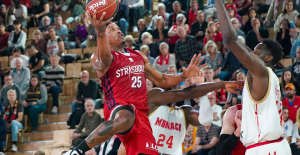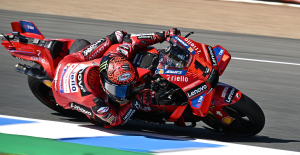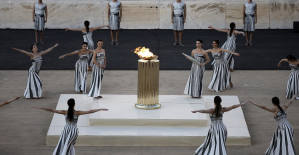When the Turkish army passed the imperial fortress of Raab in Hungary in June 1683 and suddenly aimed at Vienna, the Ottoman Empire was still a world power that made Europe tremble. When the remnants of the army dragged themselves back to the Balkans at the end of the same year, the world seemed to change for contemporaries. For the first time in centuries, the Turkish Empire had suffered a series of severe defeats. The grand vizier of Sultan Mehmed IV had to bear the consequences: Kara Mustafa Pasha (ca. 1634/35–1683) was strangled with a silk cord on December 25, 1683 in Belgrade.
As son-in-law of Mehmed Köprülü and brother-in-law of his son Fazil Ahmed Köprülü, Kara Mustafa belonged to the vizier dynasty whose reforms in the 17th century had helped the previously ailing Ottoman Empire to expand its history at its greatest. The Köprülüs came from Albania, had put down several uprisings and successfully strengthened the Sultan's power over the Janissary Guard and the harem. They took decisive action against corruption and were thus able to rehabilitate the deficit state budget to some extent. In terms of foreign policy, vassals were brought back and Venice, which lost Crete in 1669, was pushed back.
Kara Mustafa wanted to build on this success when he was appointed grand vizier after the death of his brother-in-law Ahmed in 1676. He had previously held a leading position in Istanbul as admiral and deputy to the highest minister. Now he had the chance to use the reforms of his predecessors as a basis for further expansion. A war against Russia, while not bringing the hoped-for gains, proved that the new Grand Vizier possessed military talent.
The traditional alliance with France not only brought in subsidies, but also set their sights on a new target that promised greater prestige than campaigns in the Cossack steppes: Vienna, the “golden apple” of the Holy Roman Empire and its emperor. Once before, in 1529, Sultan Süleyman I the Magnificent had attempted conquest and narrowly failed. A new, more successful advance would bring the sultan much fame and power - but his grand vizier an incomparable position.
Since the attention of the Habsburg Emperor Leopold I was drawn not only by the activities of Louis XIV of France in the west, but also by an uprising in Hungary, the company's chances were good. "He (Kara Mustafa, ed.) was happy to believe the assurances of the French envoys that the rich Austrian territories would fall into his lap and indulged in sweet dreams of renewing the glorious epoch of Süleyman," he writes Historian Klaus-Jürgen Bremm in his book "The Turks in front of Vienna". And quotes a Venetian diplomat: The grand vizier is downright drunk with his fantasies.
The unfulfillable demand on the emperor to pay half a million ducats as tribute in the future provided a veritable reason for war. In March 1683, the imperial army was assembled near Edirne, eyewitnesses reported 180,000 men. Sultan Mehmed IV accompanied his people to Belgrade, then he handed over the supreme command and the green flag of the Prophet to Kara Mustafa. A contingent of Hungarian rebels joined him in front of Raab.
A possible ally, however, kept his distance. The Polish King John III. Sobieski was clairvoyant enough to see that a victorious Ottoman Empire would be a far more dangerous neighbor than a Habsburg Empire indebted to him for support against the Turks. So Vienna and Warsaw made a treaty according to which Poland would come to the Emperor's aid in the event of an attack with 40,000 soldiers. The imperial treasury was to pay 400,000 ducats for maintenance.
Nevertheless, it was a shock for the allies that Kara Mustafa bypassed the Raab fortress unconquered at the beginning of July and marched directly on Vienna. Court and army cleared the city, which was ordered to hold its commander Ernst Rüdiger von Starhemberg until the planned relief - in September. The number of inhabitants swelled to 60,000 within a few days. But the armed forces were only a few thousand professional fighters and about 10,000 militia men.
After all, Vienna's defenses now corresponded to modern standards. And the standing armies of the European baroque "were better trained and far more reliable in battle than all the levies of the past feudal age," says Bremm. Their discipline enabled rapid tactical regrouping and the maintenance of sustained musket fire that could quickly wear down Ottoman troops.
Therefore, Kara Mustafa relied on numbers and time. From mid-July, Vienna was almost completely surrounded by Turkish troops, while light horsemen harassed the area in search of food. Again reports of atrocities circulated “that the Tartars treated the people too abominably, gouging out the eyes of little children and leaving them in blood, poking holes through the breasts of women and holes in the ears of men... and in led to perpetual servitude,” as reported by a diplomat.
Since Kara Mustafa had neglected to provide heavy artillery, a violent mine war broke out, as during the first siege of Vienna: the Turks drove tunnels against the fortifications, at the ends of which powder was detonated. For their part, the besieged did everything they could to neutralize these mines with counter-tunnels.
By September, the city's fall seemed only a matter of days. But on the 11th of the month, campfires on the edge of the Vienna Woods showed the besieged that Johann III. Sobieski and Charles of Lorraine had finally arrived. However, instead of deploying his entire army for defence, Kara Mustafa relied on weakly manned obstacles in the terrain and ordered his men to make a final assault on Vienna's battered fortifications.
However, he failed. At the same time, the allied attack began. "It was as if a torrent of black pitch was rolling downhill, crushing and burning everything that opposed it," the Grand Vizier's horrified master of ceremonies described the storm of the approximately 70,000 Poles, Imperial and Imperial troops. Far too late, Kara Mustafa gave the order to retreat. He is said to have escaped from his pompous tent through a side exit while his bodyguard was beaten up. For the first time since the devastating defeat by Timur Lenk in 1402 near Ankara, the Ottoman imperial army suffered a total defeat.
Kara Mustafa's self-confidence was still unbroken, so he didn't take the blame for the disaster, but instead looked to his subordinates. Around 500 high-ranking officers were executed, which an imperial general commented with the words: "May the grand vizier destroy his army from one side, we will then do it from the other."
After the Turks had also lost the battle of Parkany, Sultan Mehmed IV saw himself forced to interrupt his beloved hunt. He had only reluctantly accepted the attack on Vienna, which they initially wanted to withhold from him. But now, with the green flag of the prophet, he saw his own authority falter.
On December 25, Kara Mustafa, who was now holding court in Belgrade, was notified of the arrival of a high-ranking delegation headed by a commander of the Janissary Guard. When the grand vizier asked "What's up", the answer was: "Our illustrious Padischah demands the imperial seal entrusted to you and the holy flag and the key to the Kaaba (in Mecca)." - "Is death destined for me?" - "Certainly, it must be!"
The fallen man is said to have lifted his full beard with his own hand for the executioner. "Put the noose on me properly too!" were Kara Mustafa's last words, then a silk cord ended his life.
You can also find "World History" on Facebook. We are happy about a like.

 War in Ukraine: when kyiv attacks Russia with inflatable balloons loaded with explosives
War in Ukraine: when kyiv attacks Russia with inflatable balloons loaded with explosives United States: divided on the question of presidential immunity, the Supreme Court offers respite to Trump
United States: divided on the question of presidential immunity, the Supreme Court offers respite to Trump Maurizio Molinari: “the Scurati affair, a European injury”
Maurizio Molinari: “the Scurati affair, a European injury” Hamas-Israel war: US begins construction of pier in Gaza
Hamas-Israel war: US begins construction of pier in Gaza First three cases of “native” cholera confirmed in Mayotte
First three cases of “native” cholera confirmed in Mayotte Meningitis: compulsory vaccination for babies will be extended in 2025
Meningitis: compulsory vaccination for babies will be extended in 2025 Spain is the country in the European Union with the most overqualified workers for their jobs
Spain is the country in the European Union with the most overqualified workers for their jobs Parvovirus alert, the “fifth disease” of children which has already caused the death of five babies in 2024
Parvovirus alert, the “fifth disease” of children which has already caused the death of five babies in 2024 Inflation rebounds in March in the United States, a few days before the Fed meeting
Inflation rebounds in March in the United States, a few days before the Fed meeting Video games: Blizzard cancels Blizzcon 2024, its annual high mass
Video games: Blizzard cancels Blizzcon 2024, its annual high mass Falling wings of the Moulin Rouge: who will pay for the repairs?
Falling wings of the Moulin Rouge: who will pay for the repairs? “You don’t sell a company like that”: Roland Lescure “annoyed” by the prospect of a sale of Biogaran
“You don’t sell a company like that”: Roland Lescure “annoyed” by the prospect of a sale of Biogaran Exhibition: in Deauville, Zao Wou-Ki, beauty in all things
Exhibition: in Deauville, Zao Wou-Ki, beauty in all things Dak’art, the most important biennial of African art, postponed due to lack of funding
Dak’art, the most important biennial of African art, postponed due to lack of funding In Deadpool and Wolverine, Ryan and Hugh Jackman explore the depths of the Marvel multiverse
In Deadpool and Wolverine, Ryan and Hugh Jackman explore the depths of the Marvel multiverse Tom Cruise returns to Paris for the filming of Mission Impossible 8
Tom Cruise returns to Paris for the filming of Mission Impossible 8 Skoda Kodiaq 2024: a 'beast' plug-in hybrid SUV
Skoda Kodiaq 2024: a 'beast' plug-in hybrid SUV Tesla launches a new Model Y with 600 km of autonomy at a "more accessible price"
Tesla launches a new Model Y with 600 km of autonomy at a "more accessible price" The 10 best-selling cars in March 2024 in Spain: sales fall due to Easter
The 10 best-selling cars in March 2024 in Spain: sales fall due to Easter A private jet company buys more than 100 flying cars
A private jet company buys more than 100 flying cars This is how housing prices have changed in Spain in the last decade
This is how housing prices have changed in Spain in the last decade The home mortgage firm drops 10% in January and interest soars to 3.46%
The home mortgage firm drops 10% in January and interest soars to 3.46% The jewel of the Rocío de Nagüeles urbanization: a dream villa in Marbella
The jewel of the Rocío de Nagüeles urbanization: a dream villa in Marbella Rental prices grow by 7.3% in February: where does it go up and where does it go down?
Rental prices grow by 7.3% in February: where does it go up and where does it go down? Even on a mission for NATO, the Charles-de-Gaulle remains under French control, Lecornu responds to Mélenchon
Even on a mission for NATO, the Charles-de-Gaulle remains under French control, Lecornu responds to Mélenchon “Deadly Europe”, “economic decline”, immigration… What to remember from Emmanuel Macron’s speech at the Sorbonne
“Deadly Europe”, “economic decline”, immigration… What to remember from Emmanuel Macron’s speech at the Sorbonne Sale of Biogaran: The Republicans write to Emmanuel Macron
Sale of Biogaran: The Republicans write to Emmanuel Macron Europeans: “All those who claim that we don’t need Europe are liars”, criticizes Bayrou
Europeans: “All those who claim that we don’t need Europe are liars”, criticizes Bayrou These French cities that will boycott the World Cup in Qatar
These French cities that will boycott the World Cup in Qatar Basketball: Strasbourg appeals the victory recovered by Monaco
Basketball: Strasbourg appeals the victory recovered by Monaco Top 14: UBB with Tatafu and Moefana against Bayonne
Top 14: UBB with Tatafu and Moefana against Bayonne MotoGP: Bagnaia dominates qualifying practice in Spain and sets track record
MotoGP: Bagnaia dominates qualifying practice in Spain and sets track record Olympic Games: in Athens, Greece transmits the Olympic flame to France
Olympic Games: in Athens, Greece transmits the Olympic flame to France


















